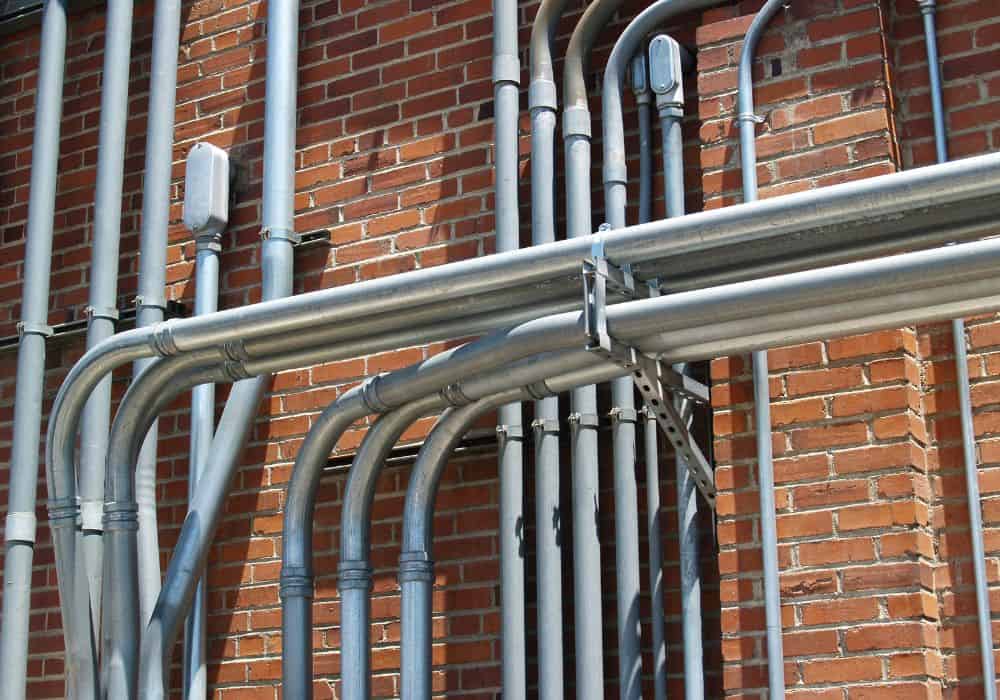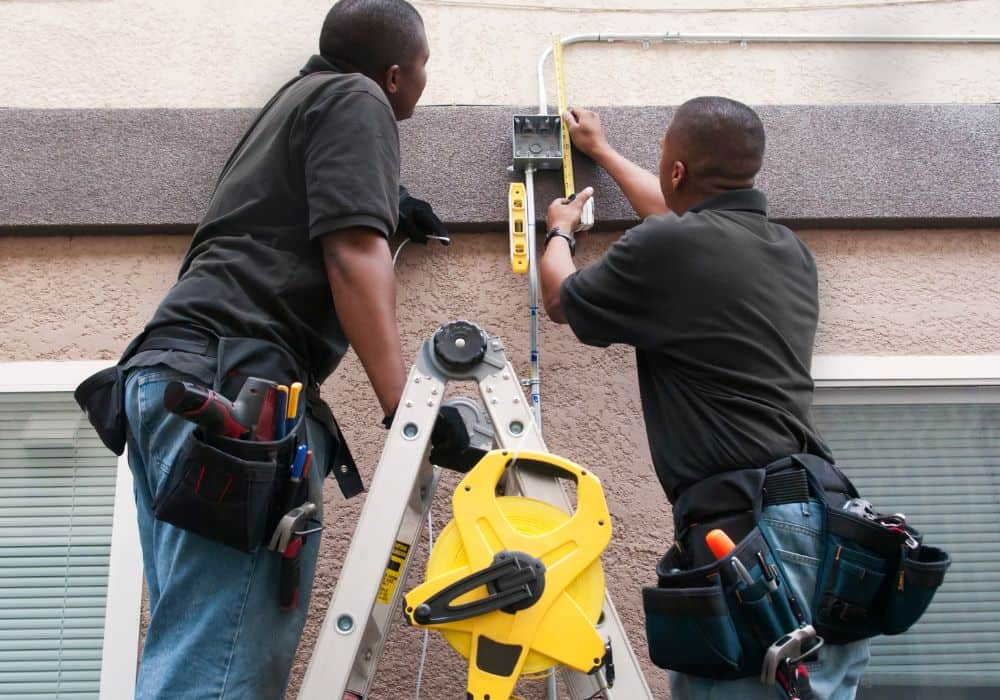Have you decided to try your hand at doing it yourself rather than always involving costly professionals? With the cost of living rising in many countries around the world, doing it yourself can save you a lot of money. However, it is important to do things correctly, especially when dealing with elements such as conduit pipes.
If you are looking for advice on how to cut conduit pipes, you have come to the right place. In this article, you will learn what conduit pipe is and when to use as well as how to cut it correctly. We have also included brief information about bending and threading conduit pipes with links to sources with more information.
Read on to find out how to cut your conduit pipe correctly and safely.
What is Conduit Pipe And When to Use it?

Conduit pipes are made from a range of materials, including plastic, fiber, metal, and fired clay, depending on the purpose of the pipe. It is generally used by electricians to protect and route electrical wiring to protect it from natural and man-made elements. They are fire, dust, and heat resistant and easy to access.
Flexible conduit, sometimes referred to as electrical metallic tubing or EMT conduit, is also used to ground wiring, and it will provide a clean appearance for your electrical works. Since every electrical wiring job is different, you will need to cut each piece of the conduit pipe to match the needs of your project.
How to Choose The Correct Conduit Pipe?
There are different reasons for using conduit pipes including connecting conduit sections and providing taps for branch conduit runs. When choosing the best flexible conduit for your needs, you need to consider how much mechanical protection and corrosion resistance you need.
You may want to speak to a professional, for example, at a builders’ merchant to ensure you get the correct conduit pipe for your project. For example, the Mogul ex. Appleton BLB400m pipes can facilitate heavy conductors, while the Form 8 ex. Crouse LB38 is a 1” rigidly threaded conduit without cover and gasket and made of Feraloy iron alloy.
How to Cut Conduit Pipe?
Cutting conduit pipes might seem an intimidating task at first. However, cutting pipe is a fairly straightforward task and you can learn how to do it in just a few minutes when you follow the steps in this guide.
Tools You Will Need
To make the process as smooth as possible, you want to make sure you have the right tools ready. You will need the following tools to cut conduit pipe:
- Bench vice or pliers
- Pencil or Marker
- Hacksaw with a sharp blade and 24-32 TPI
- Tape Measure
- Metal File or a reamer
For your safety, we also recommend using the following safety gear:
- Eye Protection
- Protective gloves

Step 1: Preparation and Safety
The first thing you need to do is to work out how much conduit pipe you will need as well as the different lengths required for your project. The path for the conduit will depend on your project and sometimes you will need to bend the pipe as well as cut it. We have included information about bending conduit pipes a little later in the article.
Once you have finished with your measurements, make sure you have all the tools listed above ready, including your safety gear. The gloves will protect your hands from splinters or cuts from burrs while your eye protection will prevent small flakes from getting into your eyes.
Step 2: Marking the Conduit
After you have measured how much conduit pipe you will need, the next step is to mark where you need to cut it. Use your tape measure to measure the right length of pipe and use a pencil or a marker to put a mark around the whole circumference where you need to cut. Alternatively, you can use adhesive tape to mark where you need to cut.
Important to Note: Never cut conduit when it is extended as the pipe will shrink back to size after you have finished and you end up with sections of pipe that are too short for your needs.
Step 3: Use a Vise For Best Result
Load the conduit pipe into a vise to hold it firmly in place while cutting. Be careful not to over-tighten the vise as it will damage the conduit.
Note: If you do not have a vise, you can also hold the pipe in place with pliers. However, a vice will hold the piece of tubing in place more firmly. Alternatively, you can hold the pipe in place with your weight as shown in this video.
Step 4: Cutting the Conduit Pipe
When your conduit pipe is firmly in the vise, you are ready to cut the pipe with your hacksaw. The reason you will need a hacksaw with a sharp blade with 24-32 TPI is that a dull blade with fewer TPI will give you a poor cut and the conduit pipe will be difficult to work with.
With your hacksaw, cut along the mark you made on the conduit pipe. Work by applying even pressure and motion until the material eventually gives way and separates into two. The even pressure on the blade will ensure you get as even and clean cut as possible.
Step 5: Clean up The Cut Edge
Some people are tempted to skip this step, but should not because an uncleaned edge can be dangerous to work with and will make the conduit pipe harder to install. Use your metal file or a reamer to clean the sharp or burred edge of the pipe until you have a smooth edge.
If you have never used a reamer before, it is a rotary cutting tool, which is of cylindrical or conical shape. The tool is used to enlarge and finish drilled holes to accurate dimensions. A reamer can also be used to clean cut ends of the pipe. You cannot use a reamer to make the cut or a hole.
Step 6: Clean up Your Work Space
As well as tidying away your tools, you need to clean the work surface as this will prevent any injuries from the metal residue. This is especially important if you do your work in a space that often gets used by other people.
Alternative Tools and Techniques
Using a tubing cutter or a pipe cutter will give you the cleanest cut, but it takes longer than cutting with a hacksaw. To use a tubing cutter, position it around the conduit, ensuring the blade is centered over your mark. Tighten the knob until snug.
Next, rotate the cutter around the conduit pipe. Tighten the cutter a little more with every rotation until you cut through the conduit pipe. When using a tubing cutter, you can achieve a clean, smooth cut, and there should be no need to file the end.
You can also use an angle grinder to cut conduit pipe, especially when cutting steel pipe. When using an angle grinder, make sure that the blade is suitable for cutting metal. Follow the same steps as when cutting with a hacksaw including cleaning the edge of the cut inside and out.
Pro Tip: Putting adhesive tape around the circumference of the pipe where you are cutting it can reduce burring and the need for filing.
How to Bend Conduit

Since you may need to bend as well as a cut conduit pipe to complete your project, you need to know how to bend it correctly. If the curve is not correct, the pipe may not reach its destination.
Once you have measured where to bend the pipe, lay the conduit on a level surface, line the bender with your mark, and bend until the conduit aligns with the angle mark. Do your bending slowly and carefully and test to see if you have the correct angle. If needed, bend it further until you get the desired angle.
How to Thread Conduit
If you are using the conduit pipe with threaded accessories such as couplings or locknuts, you will need to thread it after installation and before you can use it. Traditionally, a ratchet and handle tool is used to form the threat. However, you may prefer a modern electronic threading tool.
Conclusion
Knowing how to cut conduit pipe is a useful skill for any DIY home improver and with the right tools and good preparation, it is a straightforward task to accomplish. To achieve a clean cut that is easy and safe to work with, remember these key steps:
- Prepare
- Mark
- Cut
- Clean
If you have any questions about how to cut conduit pipes, you can write your questions in the comments section.
